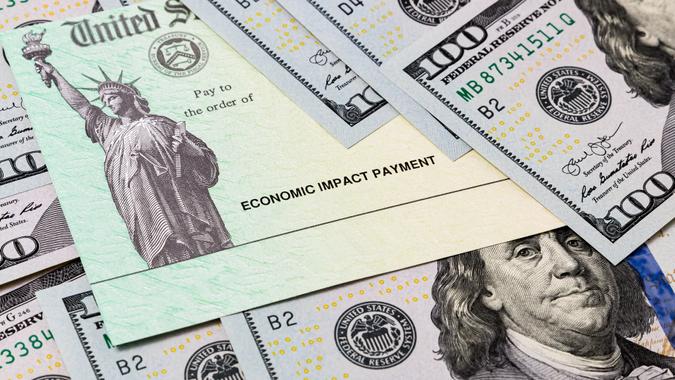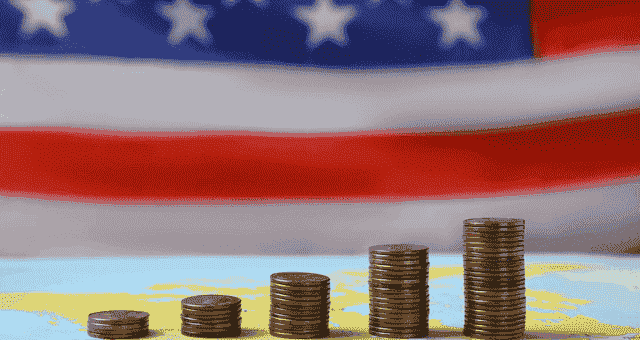The US government’s substantial stimulus payments in 2020 and 2021 in reaction to the coronavirus outbreak were a double-edged sword. On the one hand, the payments helped save the US economy from entering a serious recession and helped the stock market rebound to new all-time highs following a dramatic selloff.
They were, on the other hand, a contributory cause of several economic issues that are just now endangering the recovery. Here are some of the unforeseen repercussions of the fiscal stimulus, which some claim saved the US economy.
Inflation
The economic risks were heavily skewed toward a slump in the early days of the epidemic. Workers were compelled to stay at home for months, and many firms closed, with some never reopening. In that context, stimulation in the pockets of consumers and companies alike was critical. “…the economy may have fallen into outright deflation and weaker economic development, the repercussions of which would have been tougher to handle,” according to the San Francisco Fed.
According to figures from the US Census Bureau, the stimulus helped 11.7 million individuals get out of poverty in 2020. While most experts agreed that the early stimulus payments were necessary, many beneficiaries simply utilized them to pad their bank accounts when they continued later in 2020 and into 2021.
According to research by the Federal Reserve Bank of San Francisco, the stimulus increased inflation by up to three percentage points by the end of 2021, as too much money chased too few goods, a typical inflationary scenario.
Consumer Debt Is Increasing
Consumers utilized stimulus money to pay down debt in the early phases of the epidemic, resulting in an $83 billion fall in credit card debt, but those patterns have subsequently reversed. Americans have returned to their old habits now that the direct stimulus initiatives have ceased.
At the beginning of 2022, total household debt, which includes auto loans, home mortgages, and student debt, reached a new high of $15.84 trillion, and the New York Fed, among others, anticipates credit card debt to continue rising above the present levels of $841 billion.

“There’s a considerable likelihood that Americans’ overall credit card balances will soon reach a new record high, signifying a remarkable turnaround from the steep reduction that happened in 2020 and early 2021,” says Ted Rossman, a senior industry analyst at CreditCards.com. The significant shift in consumer credit card spending between 2020 and 2022 exemplifies how the stimulus payments influenced the economy.
Unfilled Jobs
One of the most intriguing labor data for the 2020-2022 period is how total unfilled job openings decreased at the start of the epidemic but have subsequently soared to near-record highs. Unfilled job vacancies have more than quadrupled since Q2 2020, even though the economy is booming.
While some of this may be due to employees’ reluctance to take employment while COVID-19 is still active, and some may be related to older workers retiring, there’s no doubting that stimulus funds have played a role in keeping Americans at home. Many employees don’t need to return at this time, thanks to repeated rounds of stimulus cheques, student debt forgiveness, additional child tax credits, and prolonged jobless benefits.
Opposing Points of View
Not all politicians, economists, and financial analysts believe that the stimulus payments are to blame for the present inflationary issue. Former presidential candidate Andrew Yang, for example, has claimed that the stimulus payouts were too little and short-lived to produce the present high inflation rates. “Money in people’s hands for a couple of months last year was a very, very tiny effect in my perspective,” Yang told CNBC, “in that most of that money has long since been spent and still you see inflation continue to grow.”

Yang isn’t the only one who thinks this way. According to the New Yorker, inflation is “a worldwide phenomenon,” according to Austan Goolsbee, an Obama-era economic advisor. It isn’t largely due to U.S. stimulus,” he says, noting that the European Union had 7.5 percent inflation without issuing any stimulus checks.
Final Thoughts
The stimulus payments in 2020 and 2021 are almost certain to have aided in the acceleration of inflation, but they are not the exclusive cause. Supply chain disruptions and the conflict in Ukraine are two more causes likely to keep prices high.
Read More:-
- SNAP Schedule: When Can I Expect Payments From SNAP in July 2022?
- SNAP Benefits 2022: Is There More EBT Food Stamp Money Available in My State in June?
The stimulus payments had a variety of different consequences, both positive and bad, with the most significant advantage presumably being that they saved the US economy from entering a prolonged recession at the start of the epidemic.



